Boyhood dreams inspired by the sleek motor launches and yachts passing by his eastern Michigan home on the St. Clair River during the Roaring Twenties must have sent ripples of excitement through young Nelson Zimmer. Years later, as a naval architect, Zimmer recalled the lovely lines of the vessels from his youth when he designed his 21′ 3″ utility launch (see WoodenBoat No. 43)—a throwback to the prosperous days of bathtub gin, jazz, Henry Ford’s Model T, and Charles Lindbergh’s transatlantic flight.
Standing on the pier at the Great Lakes Boat Building School (GLBBS) in Cedarville, Michigan, located on the Upper Peninsula’s southeastern shore, a newly built Zimmer utility launch is secured alongside, waiting for sea trials among Les Cheneaux Islands—French meaning “The Channel Islands”—in northern Lake Huron. She has a comely shape and a graceful sheer, which is accented by white-painted topsides and a bright transom and deck. Interior surfaces are also finished bright.
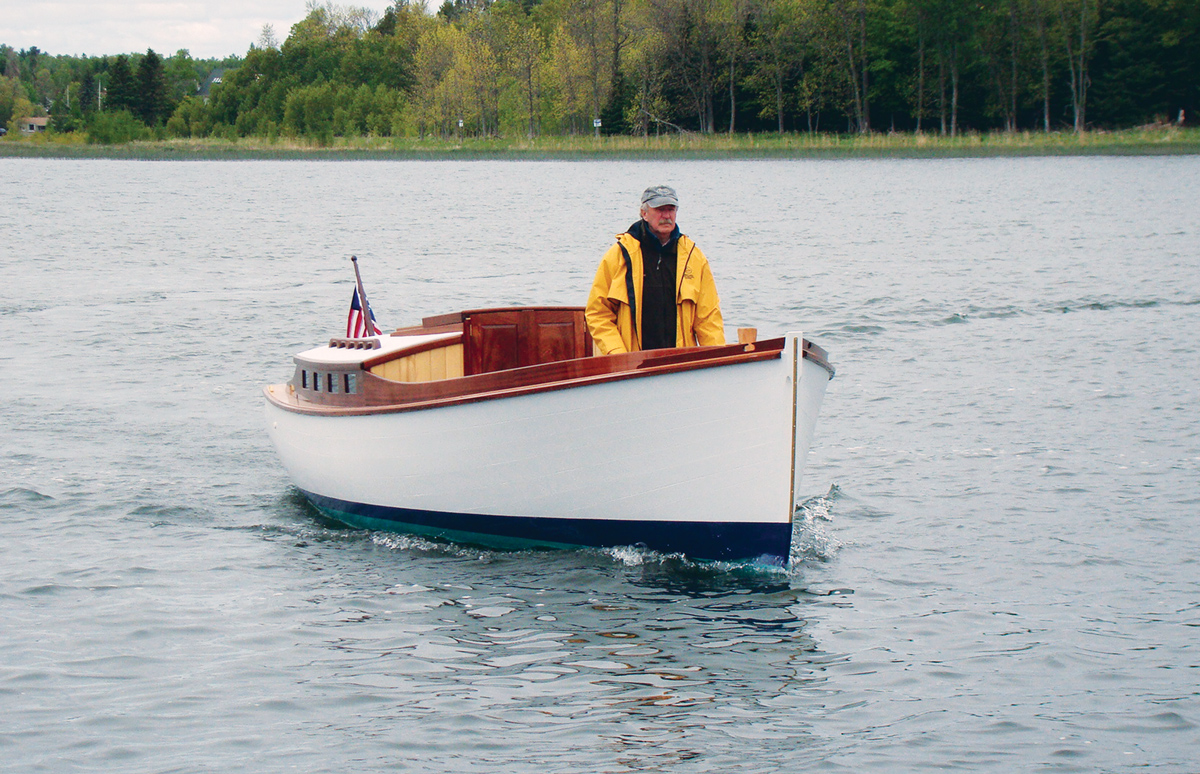 Photo by George D. Jepson
Photo by George D. JepsonThe Zimmer utility launch, designed by Great Lakes area designer Nelson Zimmer, can comfortably carry six to eight passengers. At the Great Lakes Boat Building School in Cedarville, Michigan, instructor Pat Mahon and students built this launch over the course of a year.
At 20′ on the waterline, with a 7′ beam, 1′ 7″ draft, and displacing 3,467 lbs, the fetching, unballasted launch, with its round-bottomed displacement hull, is ideal for cruising among Les Cheneaux’s 36 islands and their sheltered channels and bays within the Straits of Mackinac. Steeped in North American history, the islands—offering an abundance of wildflower meadows, cedar shores, and wetlands—are the ideal environment for the launch.
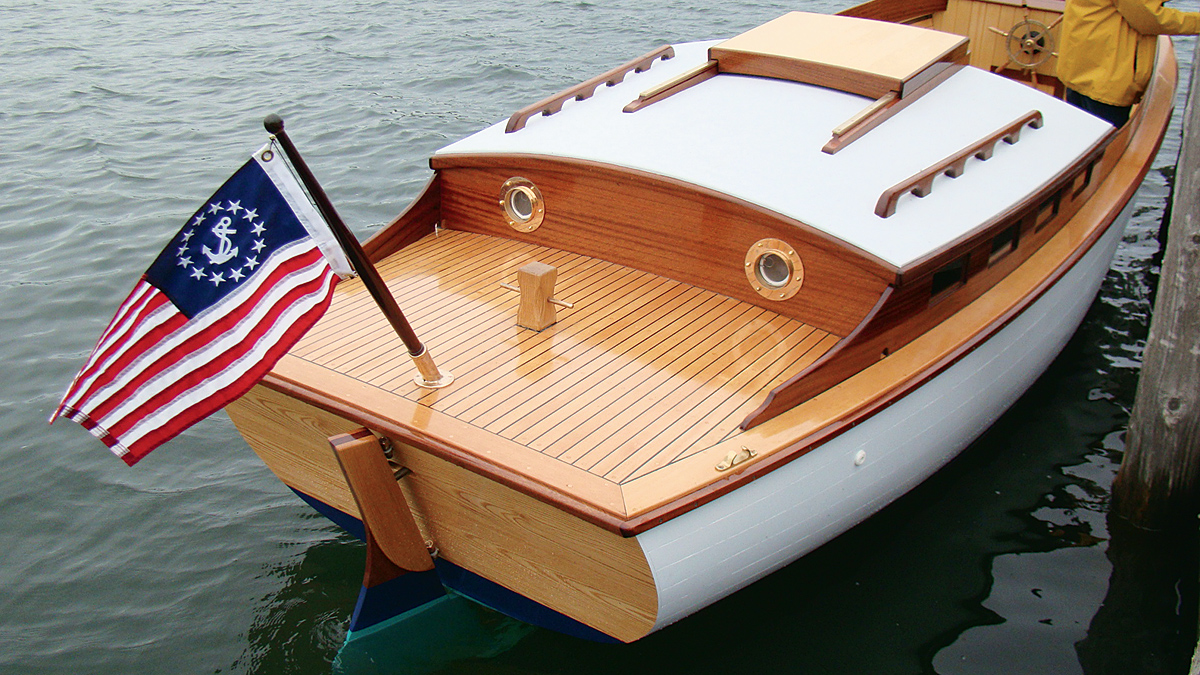 Photo by George D. Jepson
Photo by George D. JepsonThe Zimmer launch was originally designed for diesel power, but Mahon calculated that the weight of an electric alternative power source meets designed displacement specifications and uses less space. Less bulk leaves more room in the cabin for napping or ducking in out of the rain.
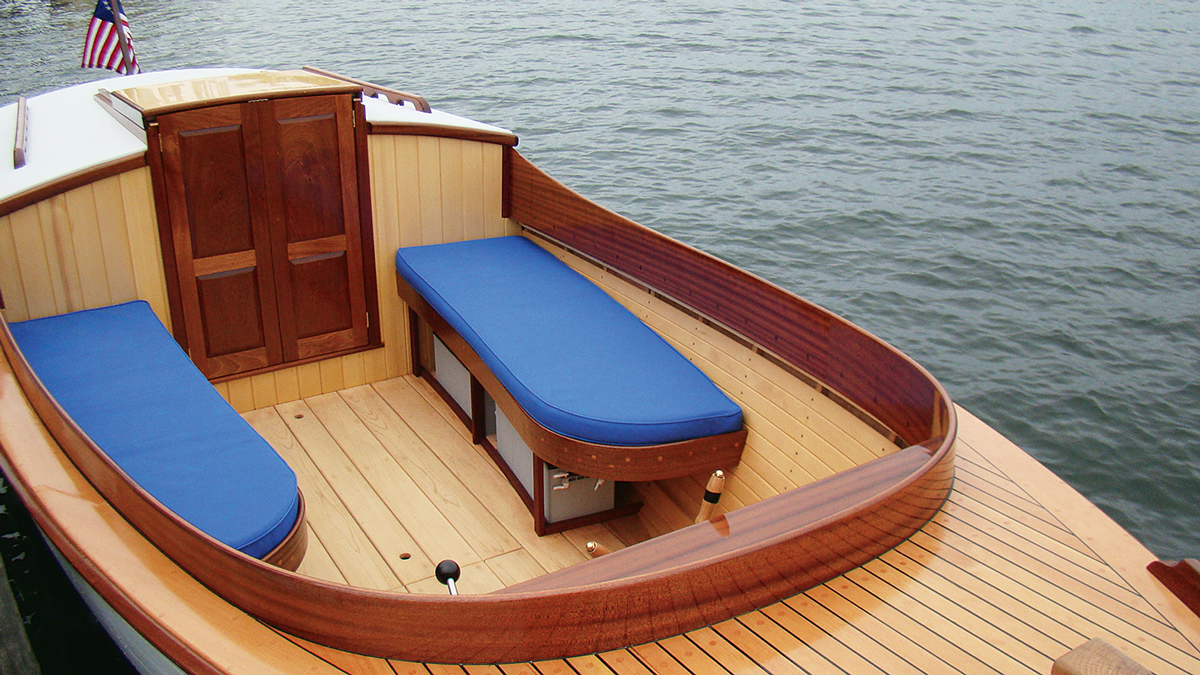 Photos by George D. Jepson
Photos by George D. JepsonWell-steeved bulkheads and steam-bent sapele coaming and seat details are among the many finely crafted components that imbue this gentleman’s launch with her classic ambience.
The Great Lakes Boat Building School chose the Zimmer launch as their class project, because she fit the needs of the school’s traditional boat building curriculum. Other factors were the boat’s overall appeal and Nelson Zimmer’s having spent his career as a Great Lakes boat designer. The school’s lead instructor, Pat Mahon, and a team of students built the boat over a year’s time.
Zimmer’s plans for the utility launch call for “advanced” boatbuilding skills. Before beginning work, students completed the first quarter of the GLBBS’s basic woodworking and small-boat building class—which involved the construction of two small skiffs—from lofting to launching. This gave them the skills needed to take on this more complex project. “All aspects of boat construction are first discussed during lectures and then practiced in the shop,” said Mahon. Although this launch was designed for carvel-planking on steam-bent frames, she could be given a cold-molded hull. This may be a good alternative, especially for freshwater use.
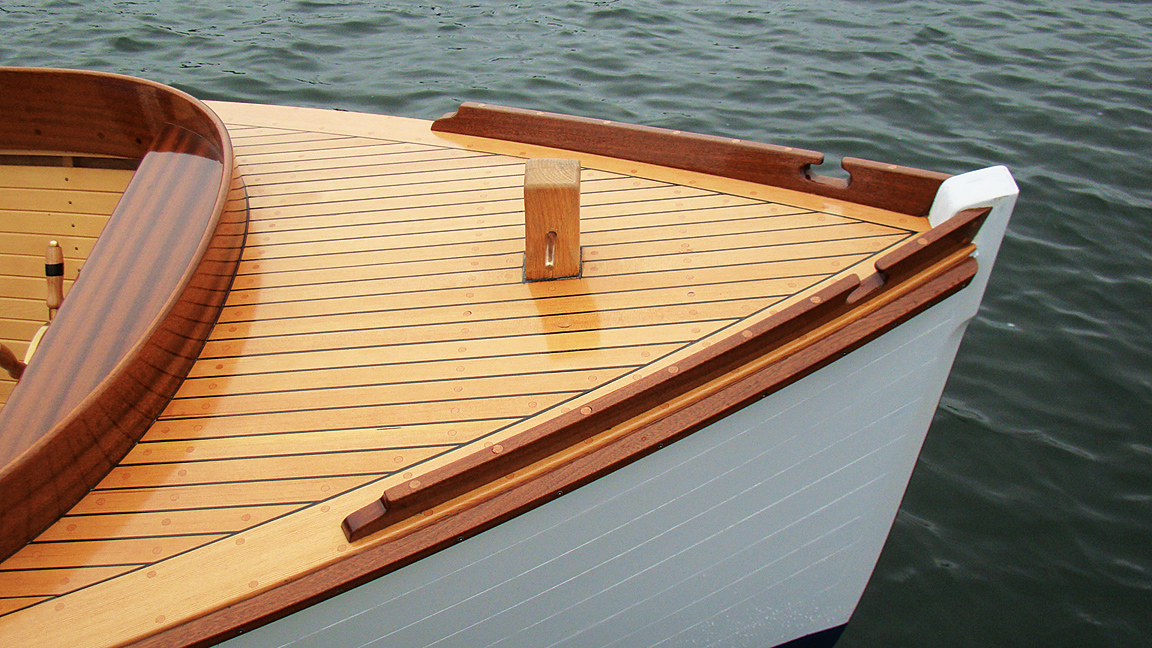 Photo by George D. Jepson
Photo by George D. JepsonPat Mahon and the GLBBS chose the Zimmer launch as a school project for the many traditional boatbuilding lessons she would provide to their students. She is carvel planked on steam-bent frames but could be built using cold-molded construction.
A variety of woods were used for her construction: purpleheart (keel), white oak (stem, horn timber, shaft- log, sternpost, transom, frames, and floors), solid red meranti (planking), Douglas-fir (deck frame, housetop beams, and decking), yellow cedar (ceiling, bulkheads, and housetop), solid sapele (house, coaming, and rubrails), and Northern white cedar (sole).
Although the boat generally was built according to Nelson Zimmer’s plans, “we made a few changes from the original construction [so that] they fit the methods we like to teach,” said Mahon. “The only significant change [to the hull’s construction] was to add a keel batten over the keel to make a rabbet for the garboard. The original used a beveled keel with no rabbet.”
Zimmer originally specified a 6–8-hp single-cylinder diesel, which would have been a dependable engine when compared to gasoline power. However, Mahon opted for electric propulsion. Elco Electric Launch Company of New York donated the motor and systems components to the GLBBS.
Either type of power would work well in the boat, depending on its intended use and the availability of re-charging facilities for the electric alternative. “The goal is always to meet the designed displacement,” said Mahon. “I calculated that the electric system weighed about the same as the original diesel engine and fuel tanks.” She floats on her designed waterline—an important measure of success.
A 48-volt, six-battery setup, installed under the cockpit flooring, powers the 4-hp electric motor for five to seven hours on a charge. The Group 8D batteries, which are available from marine suppliers, can be recharged over a period of approximately 14 hours with 110-volt electrical service, which is commonly available at marina docks.
Speed depends on how heavily she’s loaded; the launch will run up to 6 knots if kept light. The estimated cruising time at 75 percent power, with two charged battery banks, exceeds six hours. At 50 percent power, with two battery banks, the time increases to approximately 10 hours.
Although electric power may be sensible given the cost of oil and oil-based fuel in today’s world, being dependent upon the availability of electrical outlets may reduce range. Stops must be well planned to avoid hours of charging at inconvenient times or, worse, losing power altogether. She would make for a cumbersome row ashore. Yet she’s well suited to these relatively calm waters, which are dotted with marinas and offer plenty of mainland and island shoreline.
The launch is ideal for day-running from a dock or mooring, or transporting passengers and supplies between shore and an island. She provides a stable platform in a chop and is friendly to fishermen because of her silent running and relatively flat wake. The launch can be trailered, albeit with some difficulty and risk of drying out.
It is an unseasonably chilly early June afternoon, under pewter skies, when we step aboard. A light breeze sends ripples across the gunmetal blue waters of Cedarville Bay. The electric engine is switched on, and nothing more than a hushed hum disturbs the silence. Lines are cast off, and the slender launch slips ever so quietly into the harbor. Cruising off LaSalle Island, we pick up speed, with the swish of water along the hull the only discernible sound.
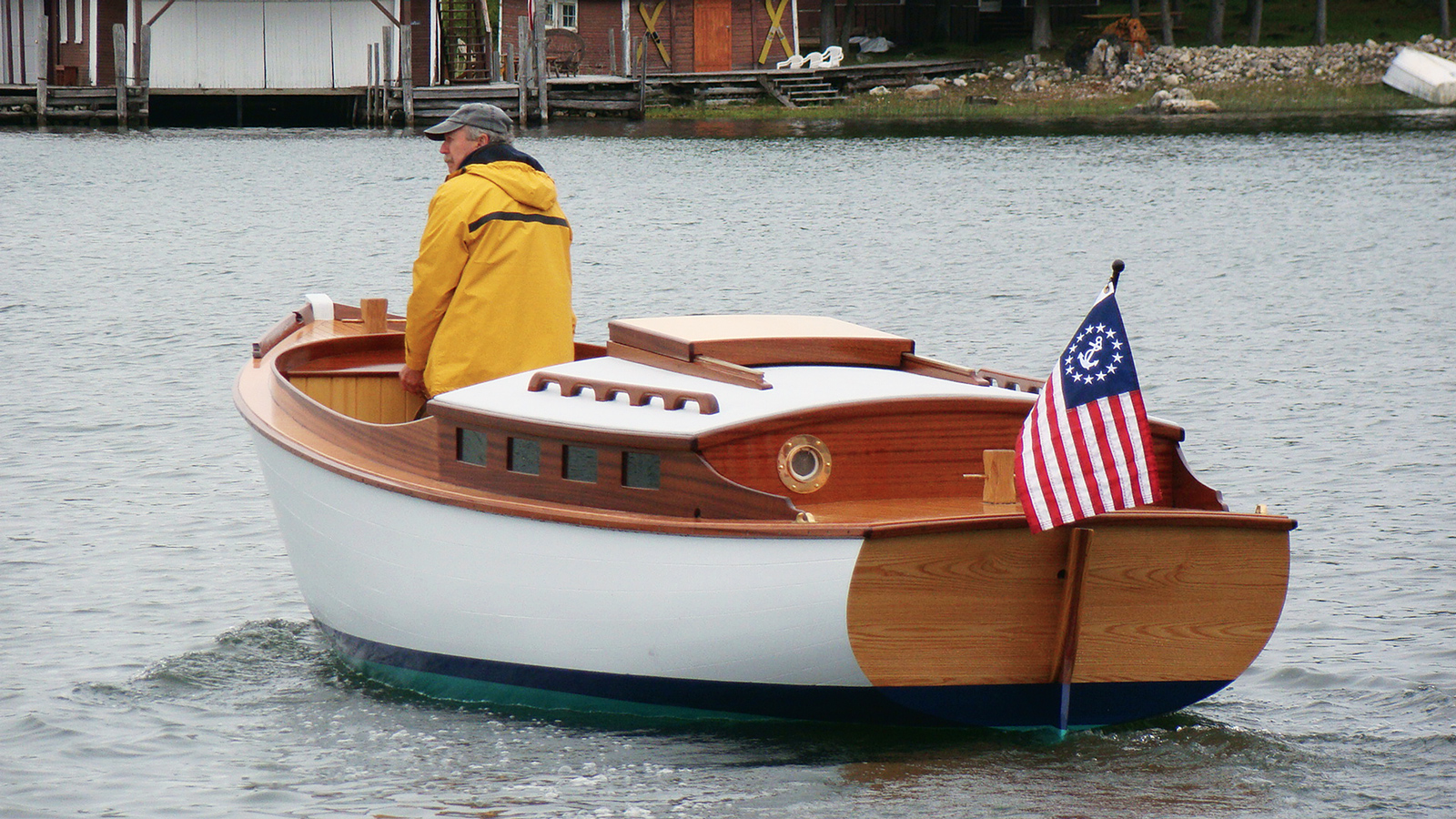 Photo by George D. Jepson
Photo by George D. JepsonThough comfortable to operate, the Zimmer launch’s forward helm is unusual and requires practice for those who are used to steering from amidships or aft.
Steering from forward is a novel experience, with nearly 18 feet of boat behind me. Docking and maneuvering in close quarters or traffic requires practice for the uninitiated or those used to steering from aft or amidships. Answering the helm during sweeping turns to port or starboard, the launch’s motion is minimal. Maneuvering alongside the dock, she slips easily between forward and reverse.
The Jazz Age may be long past, but Nelson Zimmer’s legacy to new generations of wooden boat builders, designers, sailors, and admirers lives on. The Great Lakes Boat Building School has paid a befitting tribute to Zimmer, who, like the majority of the school’s students, grew up on the Great Lakes. In building this poetic launch, with all the skill and effort expended to bring her to life, it is clear that the school, now in its third year of operation, aims to engender many more like him. I think Zimmer, who crossed the bar in 2007, would be pleased.
Want to Build the Zimmer Utility Launch Yourself?
Get to know the Zimmer utility launch design first by reviewing the study plan. We review the basics and the line drawings like the ones below, and give you a direct link to where you can purchase the full set of plans.

The Zimmer launch’s buttock lines, rising to clear the waterline aft, will make her easy to drive at low speeds, while moderate deadrise contributes to giving her a comfortable ride in a chop.
This Boat Profile was published in Small Boats 2010. Plans for the Zimmer utility launch are available from The WoodenBoat Store.

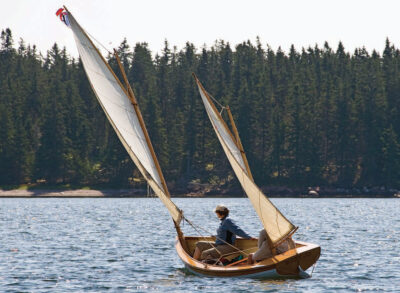
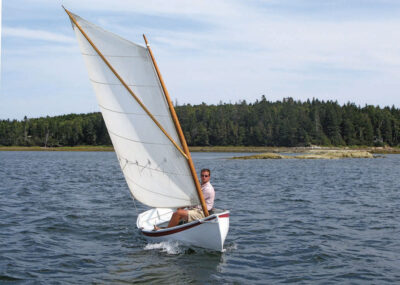
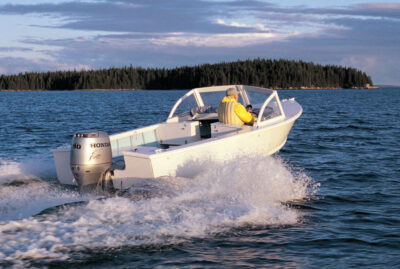
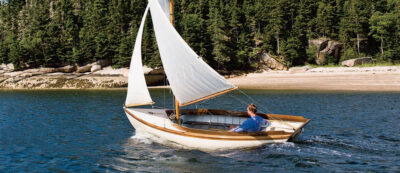
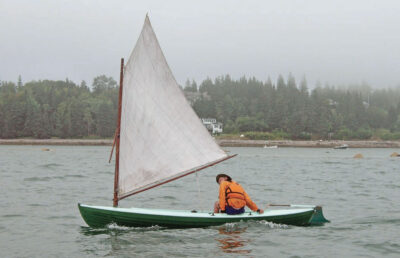


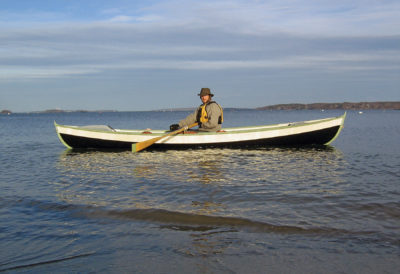
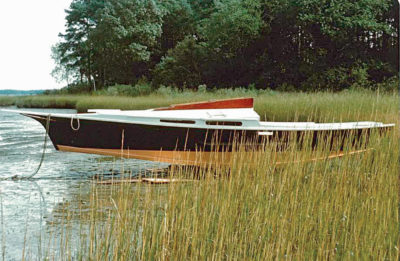
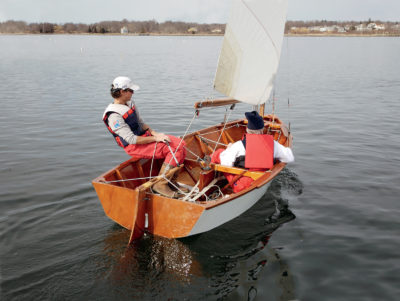
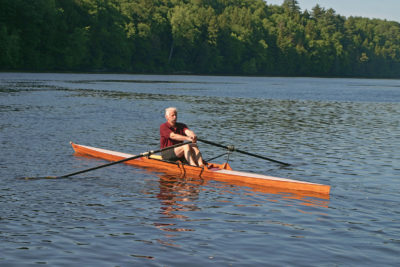
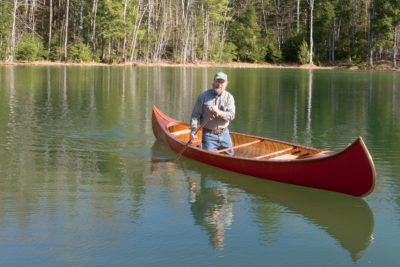
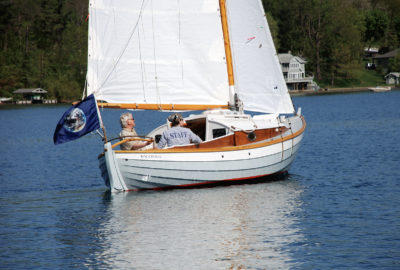
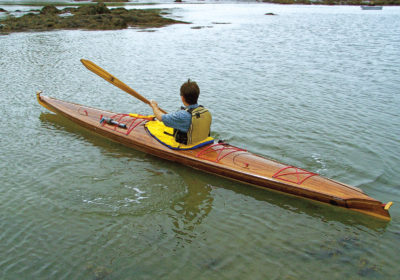
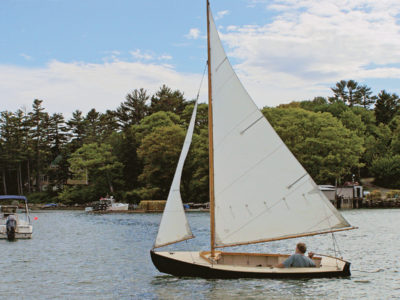
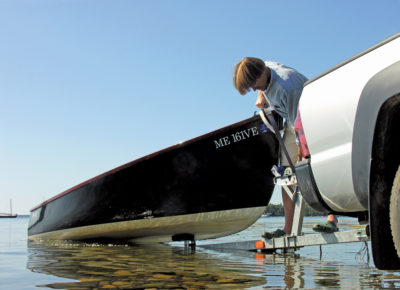
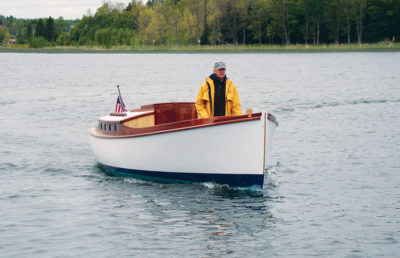
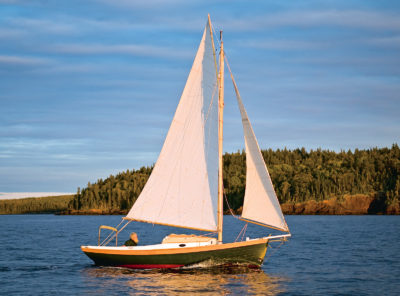
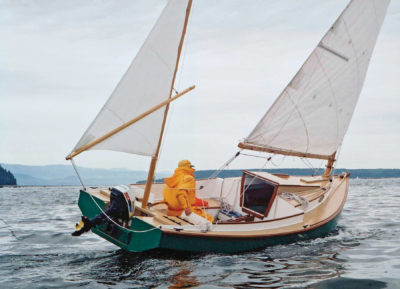
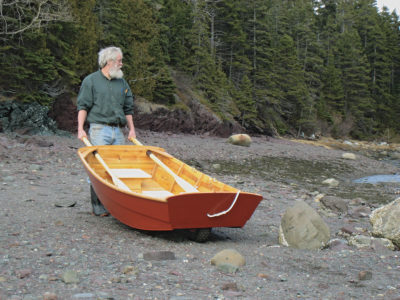
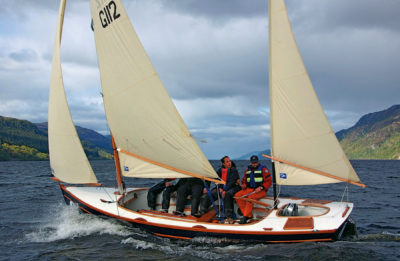
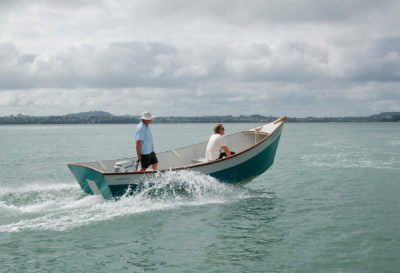


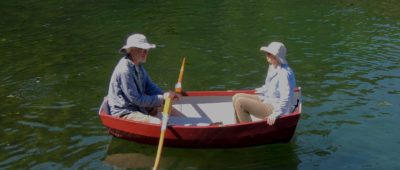
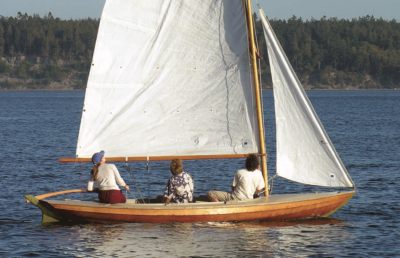
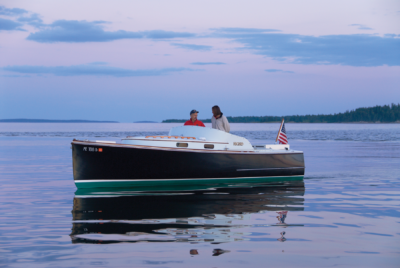
Join The Conversation
We welcome your comments about this article. If you’d like to include a photo or a video with your comment, please email the file or link.